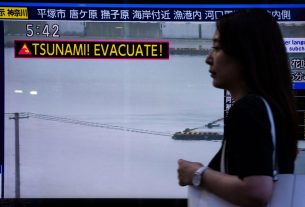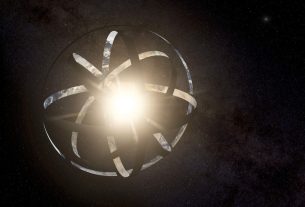In his new book Origins of the Wheel of Time, historian Michael Livingston explores the real-world myths and legends that Robert Jordan used to construct his epic fantasy series The Wheel of Time. Those influences include characters and motifs from Europe, West Africa, the Middle East, and Japan, among others.
“He’s not confined in any way,” Livingston says in Episode 532 of the Geek’s Guide to the Galaxy podcast. “He has no guardrails. The world is his oyster, because literally everything can be a part of The Wheel of Time. It’s an incredible sort of thing to try to do.”
Livingston lives in Charleston, South Carolina, and teaches at The Citadel, which gives him a leg up when it comes to researching Jordan, who attended The Citadel and lived in Charleston for most of his life. “Living here, and working at the place where he went to school and that meant so much to him as an alma mater, certainly was a huge advantage,” Livingston says. “When I’m reading the books, and I read the name of an inn, I’m like, ‘That’s that pub next to his house. I know that place.’”
As The Wheel of Time expanded to more than 10 volumes, Jordan was often accused of deliberately padding out the series. But Livingston found nothing in the author’s voluminous notes to suggest that that was the case. “I get that cynicism, but it’s not really fixed in reality,” he says. “They weren’t, then or now, trying to milk more dollars out of the fans. He wanted to tell a story, and he wanted to do it right, and he had the success that he could do it the way he thought was best.”
Origins of The Wheel of Time has already been a hit with Jordan fans, but Livingston hopes the book will reach a wider audience as well. “What I’m talking about is biography, how he did what he did, his relationship to Tolkien, and just seeing how an author developed as a writer and developed a project,” he says. “Just to see an artist at work—I hope anyway—has a connection point to anybody.”
Listen to the complete interview with Michael Livingston in Episode 532 of Geek’s Guide to the Galaxy (above). And check out some highlights from the discussion below.
Michael Livingston on Origins of the Wheel of Time:
We pitched it to the estate, to Jordan’s widow and former editor Harriet. I sent the email expecting no—”No, you can’t do this”—and instead it was like, “I think it’s a great idea. You’re the only person who can do it, and I’ve already talked to the head of Tor Books, they’re expecting it.” It went from zero to a hundred really quick. And yeah, at that point everybody was engaged in the thing. It was really wild to have that experience of a fully authorized [project]. I could look at anything I wanted, I could talk to anybody I wanted, and there was such a warm, welcoming openness from everybody on that side, and at Tor. The copy editor that copy edited The Wheel of Time books was my copy editor. We did everything we could to make it so that everybody who would know about it had touched it.
Michael Livingston on Robert Jordan’s desk:
Here in Charleston we had a book signing. It was the only real official book signing we did, and a bunch of people came from literally all over the world—we had somebody from England who flew in for the book signing—and I gave a little lecture, here at the school. I was like, “Man, you guys came so far. Do you want to come see the desk?” And they said yeah, they really would love to do that. So they all came up—it must have been about 20 people ultimately crowding the hallway, trying to get pictures of it. They were like, “Can we sit at the desk?” “Yeah, you can sit at the desk. I do it every day.” … It’s not an everyday occurrence as a professor that you have people lining up in the hallway to take pictures of your office. It’s a little bit like, “I need to keep my office cleaner than other people, I think. It’s a museum now.”
Michael Livingston on Thermopylae:
It’s a strange area geographically, and in fact has undergone huge changes to the landscape as a result. Where the coastline was in Leonidas’ day, when you go there, you can hardly see the water. It’s kilometers different, where the coastline is. The ground that he was fighting on is way beneath your feet. This isn’t just a meter down—the Middle Ages are about a meter down, the ancient world a couple meters—this is a dozen or more meters down, because of the weird geography of that place. And that weird geography is why it was this place of battle for so long, because that geography made it a kind of choke point. So yeah it’s radically different today. You have to get through a pretty sizable amount of work to try to reconstruct that as best we can, to try to understand what happened.
Michael Livingston on J. R. R. Tolkien:
He says in a letter at one point—I’m paraphrasing—but he says, “As for where I got the word ‘hobbit,’ I’ll leave it to future students, I don’t want to deprive them of the fun.” It’s kind of like he threw down this gauntlet, and everyone just ignored it. … Tolkien loved making these linguistic jokes that only those who saw behind the linguistic constructions would get. Like the fact that it’s “Theodin King.” That’s the head of Rohan, “Theodin King.” Well “Theodin” means “king,” so his name is “king king.” Or “Bree Hill.” “Bree” is the word “hill” in Welsh, so that’s “hill hill.” He knew that, and he just thought that was hilarious, he thought that was a riot, that most people couldn’t see that, but he could see it. And the same I think is true of “hobbit” and “Bilbo Baggins” and a number of other things.



